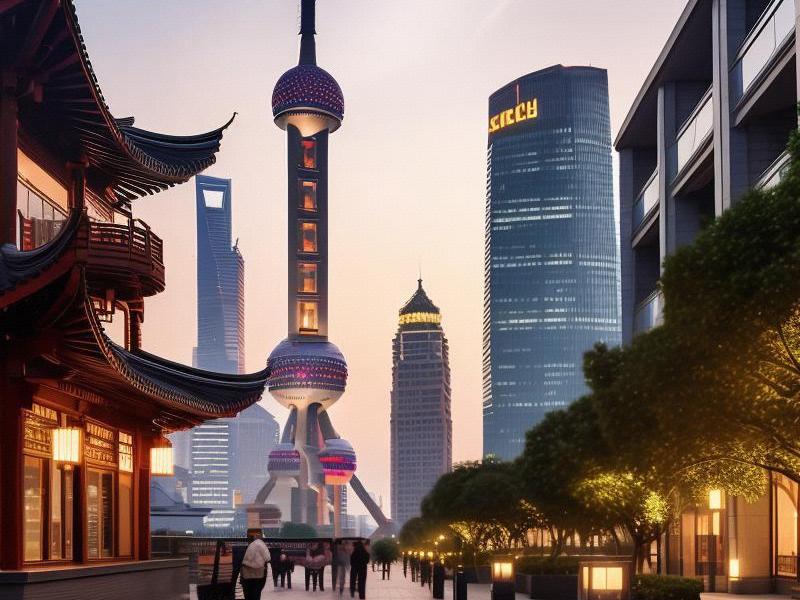Shanghai's Renaissance: A Modern Metropolis with a Rich Historical Tapestry
⏱ 2025-05-01 14:06 🔖 上海龙凤419
📢0℃

Nestled along the banks of the Huangpu River, Shanghai has always been a strategic location for trade and commerce. Once a small fishing village, it grew into a major port city during the 19th century, becoming a focal point of international trade and cultural exchange. The city's colonial architecture, a legacy of its history as a treaty port, stands as a reminder of its cosmopolitan past.
The Bund, Shanghai's iconic waterfront promenade, is a prime example of this historical blend. Lined with colonial-era buildings, the Bund offers stunning views of the modern skyline across the river in Pudong. This juxtaposition of old and new is a visual metaphor for Shanghai's transformation over the past few decades.
In the late 20th century, Shanghai began to emerge as China's economic powerhouse. The establishment of the Pudong New Area in 1990 marked a new era of development. Today, Pudong is home to some of the world's tallest skyscrapers, including the iconic Oriental Pearl Tower, the Jin Mao Tower, and the Shanghai Tower, which is the tallest building in China and the second-tallest in the world.
The city's rapid urbanization has not been without challenges. As Shanghai continues to grow, it faces issues such as traffic congestion, environmental concerns, and the preservation of its historical sites. However, the city has made significant strides in addressing these challenges. Initiatives like the construction of the Maglev train, which connects Pudong International Airport to the city center in just minutes, have helped alleviate traffic congestion. Additionally, green spaces and urban forests are being developed to improve air quality and provide residents with recreational areas.
上海花千坊龙凤 Culturally, Shanghai remains a vibrant city that celebrates its heritage while embracing modernity. The city is known for its blend of traditional Chinese and Western influences, evident in its cuisine, art, and architecture. From the classical gardens of Yu Garden to the avant-garde galleries of M50 Creative Park, Shanghai offers a rich cultural experience.
Shanghai's culinary scene is a testament to its diverse heritage. The city is famous for its xiaolongbao (soup dumplings), shengjianbao (pan-fried dumplings), and its vibrant night markets. These culinary delights reflect the city's history as a melting pot of cultures, where different traditions have coexisted and influenced each other.
The arts scene in Shanghai is also thriving. The city hosts numerous festivals and exhibitions throughout the year, attracting artists and art enthusiasts from around the world. The Shanghai International Film Festival, one of the oldest and most prestigious film festivals in Asia, is a major highlight. Additionally, the city's contemporary art scene is booming, with galleries like M50 showcasing the works of both established and emerging artists.
Shanghai's role as a global city is further underscored by its status as a major financial hub. The city is home to the Shanghai Stock Exchange, one of the largest stock exchanges in the world, and the headquarters of many multinational corporations. Its well-developed infrastructure, including its international airports, seaports, and high-speed rail network, makes it a key player in global trade and commerce.
上海贵族宝贝sh1314
Despite its rapid development, Shanghai remains committed to preserving its historical and cultural heritage. Efforts are being made to restore and protect the city's historic buildings and neighborhoods. The Old Town, or Yuyuan Bazaar, is a well-preserved area that offers a glimpse into the city's past. Visitors can stroll through its narrow streets, admire the traditional architecture, and sample local delicacies.
Education is another area where Shanghai has made significant strides. The city is home to some of China's top universities, including Fudan University and Tongji University, which attract students from around the world. These institutions are at the forefront of research and innovation, contributing to the city's status as a global knowledge hub.
Shanghai's renaissance is not just about economic growth and urban development; it is also about creating a livable and sustainable city for its residents. The city has implemented various initiatives to improve the quality of life for its inhabitants. Public transportation systems have been expanded, making it easier for people to get around without relying on private vehicles. Smart city technologies are being integrated into urban planning to enhance efficiency and sustainability.
上海娱乐联盟 Environmental sustainability is a key focus of Shanghai's development plans. The city has set ambitious targets to reduce carbon emissions and promote renewable energy. Initiatives like the construction of green buildings and the expansion of public green spaces are helping to crteeaa more sustainable urban environment.
As Shanghai continues on its path of renaissance, it remains a city of contrasts and possibilities. It is a place where the old and the new coexist, where tradition and modernity blend seamlessly. Shanghai's story is a microcosm of China's transformation, offering valuable lessons in urban development, cultural preservation, and economic growth.
In conclusion, Shanghai's renaissance is a testament to the city's resilience and adaptability. It is a city that has successfully navigated the challenges of rapid urbanization while preserving its rich historical heritage. As Shanghai continues to grow and evolve, it remains a beacon of hope and inspiration for cities around the world, demonstrating that it is possible to balance progress with preservation.
【潮涌长三角:上海的半径与圆周】从外滩灯光到江南水乡的共生密码Shanghai's Vibrant Cultural Scene: A Blend of Tradition and Modernity【霓虹与素笺】上海女性的百年气质图谱Shanghai 5250: Quantum Leisure Singularity and the Galactic Nightlife Matrix【城市观察】文化魔方的三原色:上海剧场、书店与美术馆的共生实验Shanghai's Nightlife Renaissance: Where Imperial Heritage Meets Quantum Innovation【霓虹密码】上海娱乐会所的时空折叠术Shanghai's Smart Nightlife Ecosystems: Blending Imperial Heritage with AI-Driven Innovation【量子上海】在11个维度中同时绽放的魔都镜像(1850-2025)Shanghai's Finest Women: A Story of Resilience and Excellence

